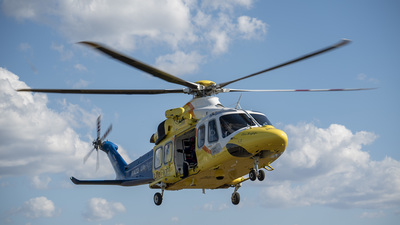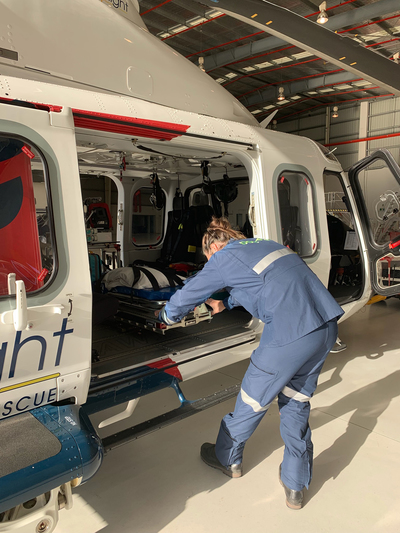A Day in the Life of a LifeFlight Critical Care Doctor

Every day in Queensland, the buzz of RACQ LifeFlight Rescue helicopters can be heard overhead, as they airlift sick and injured patients to hospital. The choppers are virtually ‘flying intensive care units’, which save critical minutes in getting patients to higher levels of medical attention. A service agreement with the Queensland Government, the sponsorship of RACQ and innovative profit-for-purpose social enterprises all contribute to pay for this vital service, which is provided at no cost to patients; however, RACQ LifeFlight Rescue relies on the community to help make up nearly 30% of funding each year. To ensure the aeromedical care is world class, most of the aircraft carry highly trained Critical Care Doctors on board.
Swedish doctor Ola Sorensen has just started work for LifeFlight, after a rigorous training program, where he learnt about the intricacies of aeromedical retrievals in Queensland. Here’s a peek into what his day, or night, as an RACQ LifeFlight Rescue Critical Care Doctor looks like.
22:00 Tonight I’m on night shift, sleeping at the on-site accommodation at the Toowoomba RACQ LifeFlight Rescue base. I try to get as much rest as possible, because I have to be ready to jump into action to help patients at any time. On any given shift, the crew could be called to rescue a stranded hiker off a mountain peak, help people injured in a car crash or search for a missing kayaker in the ocean. These are the types of missions you may have seen RACQ LifeFlight Rescue perform, on the news. But the day-to-day work is mostly transferring sick patients to hospitals that offer a higher level of care.

23:50 A call from the tasking agency, Retrieval Services Queensland, wakes the crew up just before midnight. We’ve been called to transfer a woman with health complications, from Miles Hospital to Toowoomba Hospital. We have a rapid response time, so hitting snooze isn’t an option. Once that phone rings, it’s action time. I quickly jump out of bed, put on my flight suit, grab four units of blood and the drug bag. Then I have a short briefing with the Queensland Ambulance Service Critical Care Flight Paramedic, who is a crucial part of the team. The rest of the medical equipment has already been checked and prepared during the day, which saves crucial minutes in getting off the ground.
00:15 Meanwhile, the pilot and aircrew officer have prepared the helicopter and taken it out of the hangar. Once we’re in the air, the aerial views of Queensland’s stunning landscapes could be a tempting distraction, but I use this time to focus on preparing myself for what I’m about to face and to visualise what course of action I’ll take. The information I receive about the patient’s condition, before arriving at the scene, can sometimes be very limited, especially for ‘priority one’ callouts. The flight time is spent having in-depth conversations with the paramedic about potential complications and what treatment may be required for the patient.

01:15 Miles is a small country town, about 200 kilometres north-west of Toowoomba, so the flight takes about an hour. We land on an oval near the hospital, as many of the rural facilities don’t have a helipad. A Queensland Ambulance Service vehicle then either transports the patient to us or drives the aeromedical team to the hospital. The hospital staff or paramedics then hand over the patient, before I undertake my own assessment and continue treatment. The patient is loaded into the chopper and I call back the tasking agency with a situation report, before we take off to the receiving hospital.
02:30 During the flight I closely monitor the patient and continue her treatment. This is a very different environment to what I’m used to working in, with a much smaller team and workspace than in the hospital.

03:30 We land on the rooftop helipad at Toowoomba Hospital. The patient is wheeled inside, where I do a handover with the receiving medical staff, before we leave her in good hands. We’re now only a short flight back to the Toowoomba RACQ LifeFlight Rescue base. Once we land, all equipment is cleaned and restocked so it’s ready for the next job, which may come at any moment.
Six big ideas for beating brain cancer
The University of Newcastle's Mark Hughes Foundation Centre for Brain Cancer Research has...
All metropolitan public hospitals miss out on green light
AMA's hospital logjam finder uses a traffic light system to indicate care within the...
Brain and kidney injury treatment after cardiac surgery
A multi-site study to test a treatment that may reduce brain and kidney injury after cardiac...









